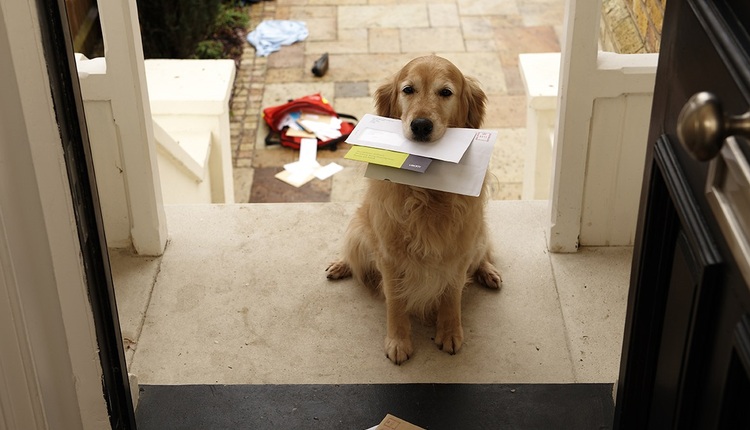In a world of Twitter, Facebook, and 24/7 text messaging, connecting to clients and prospects should be easy. However, the combination of channel complexity, information overload, and new-found competition makes it extremely challenging to engage clients in effective, cost-efficient ways.
A typical adult may be exposed to up to 3,000 promotional messages each day. Many choose to opt-out, toss out, or simply delete these contacts. Spam filters, do-not-call lists, and unsubscribe buttons have put consumers in control.
While marketers are constantly developing new channels of communications, organizational silos and disparate systems can make it difficult to communicate a consistent, well-targeted message in a client's preferred channel. Managers also face tighter budgets and a renewed pressure to increase ROI.
Today, many organizations are turning to direct mail solutions for Standard Mail to help deliver higher impact at lower costs.
Five Strategies That Can Help Improve Direct Mail ROI
1) Lower postage expenses by automating presort - Postage remains one of the biggest expenses of direct mail campaigns. By optimizing presort, organizations can achieve greater discounts by reducing the amount of work required by the USPS. For example, by sorting mail at the 5-digit ZIP Code level, it can save almost four cents per piece.
For large businesses handling mail operations internally, software platforms are available to help make it easy to create efficient print and mail stream operations. Many can be integrated into existing systems. For service bureaus or organizations that produce mail in-house on a regular basis, it often makes sense to sort mail physically using sorting equipment, which can run up to 50,000 mailpieces per hour. New, smaller sorters are making in-house sorting a good option for organizations.
For businesses that don't have the time or expertise to implement presorting onsite, external presort service providers can offer sophisticated technology and the volumes necessary to optimize presort density. Specialists with a national presence can help maximize postal discounts and increase the speed of in-home delivery.
Increasingly, high-volume mailers are presorting mail in-house, and then sending any pieces that don't qualify for the lowest postal rates out to an external presort service provider for added savings. This hybrid model helps ensure that more mail benefits from 5-digit sort rates and streamlined delivery.
2) Boost open and response rates with personalization - New techniques and technologies enable mailers to create customized communications that can make a bigger impact at a lower cost. For example, print technologies make it easy to create customized messaging on the outside of the envelope, as well as within the body of the letter. Using data tools, businesses can leverage insights into a client's preferences and purchase patterns to create relevant messaging to that individual. These personalized messages increase open and response rates while achieving the same postal discounts as non-personalized offers.
Mailers are also adding personalized Quick Response (QR codes) to their envelopes and mailpieces, making it easy for mail recipients to link to websites using smartphones. This ability to create a multichannel experience with the same offers and messages in all media can dramatically improve response.
While personalization provides a highly effective way to increase impact, it requires significant data quality and data hygiene processing. Incorporating routine data hygiene tasks into direct mail practices will help ensure that mailing lists are accurate, uniform, and maintained over time.
3) Gain more control over delivery dates by inducting mail closer to its final destination - The official USPS delivery standards for Standard Mail are two to nine days, with no delivery guarantees. For marketers, this can make it challenging to time direct mailings for specific events or coordinate activities across multiple channels.
As a result, many in-house mailers are adopting Drop Ship strategies, where mail is split, shipped and inducted at post office facilities closer to its final destination. Drop Ship, or destination-point induction, is a strategy to maximize postal discounts and help ensure quick delivery, enabling mailers to gain control of in-home dates for their direct mail, often within a one- or two-day range.
The closer mail is taken to its final destination, the lower the postage cost. For Standard Mail, mail is dropped off at a USPS Network Distribution Center (NDC) or Sectional Center Facility (SCF). After the recent postal reorganization, USPS distribution maps are more consistent for better delivery consistency in every area, eliminating lag time, especially since mail is placed in walking order prior to distribution to local post offices. This eliminates the possibility of holding Standard Mail for slow mail days.
If you currently presort your own mail, new software solutions make it easy to sort mail into region-based mail pallets that you can deliver via private shipping companies to USPS locations throughout the US. Drop ship savings can help mailers dramatically reduce overall postage costs to 23%.
By working with an external presort service provider, you can also take advantage of drop ship benefits if you choose a third-party specialist with a national network of operational centers. Some national providers maintain dedicated transportation departments that coordinate shipping across the country, work with large national and regional consolidation partners, deliver directly to national and regional consolidation centers, and self-deliver to local SCFs. In many cases, these networks can induct as much as 82-87% of mail at the destination SCF, bypassing many USPS stops along the way.
4) Increase your impact with variable, color print - For years, direct mail was often seen as a high-volume, low-creative communications vehicle for efficiency and effectiveness. However, digital color printing is now making it possible to personalize direct mail letters in vibrant, attention-getting color. Envelopes, once a blank canvas for addressing, can now become masterpieces of promotion as technology allows for printing inside the envelope and exterior wrappers for enhanced personalization.
One-size-fits-all content cannot match the relevance and response-generating abilities of personalized color messaging inside and outside the envelope. Studies show that consumers are up to 70% more likely to open a mailpiece with color text and graphics on the front before opening pieces with no headline or graphic.[i]
With 100% variable printing, mailers can imprint an address, postal barcode, logo, return address, targeted message, and image in a single pass without any slowdown in production. Mailers can use any or all of the existing "real estate" on documents to create personalized color messaging and transform transactional documents into data-rich customer communications that can drive new revenue.
5) Coordinate multichannel touchpoints through visibility into postal operations - A decade ago, direct mail offered little in terms of data and reporting. Before, we knew total volume mailed and months later we could compare orders to determine overall response rate.
Today, barcode technologies and online dashboards provide piece-level tracking and detailed financials, which enable new ways to coordinate multichannel efforts, increase response and maximize campaign ROI.
By tracking who receives an offer, and how and when that customer responds, customer engagement strategies can be redefined to create effective offers in the future. The Intelligent Mail barcode (IMb), a required element for direct mail preparation as of January 28, 2013, makes this possible.
In terms of capabilities, organizations need a way to generate the barcode, print the barcode, capture USPS data and generate action-oriented reports.
Organizations can achieve this using software and hardware, or by working on mail preparation with an external presort services provider that has invested in technologies that maximize the value of barcode intelligence.
Some third-party specialists also provide 24/7 access to incident and geo-location tracking for greater visibility. As technology continues to evolve, large national service providers will be able to track weather patterns, traffic accidents and road construction so trucks used to ship mail to local USPS facilities can be quickly re-routed to avoid any possible delays.
For organizations looking to increase efficiency and effectiveness of customer communications, now is the time to take a closer look at direct mail solutions for Standard Mail. While IT heads and marketers continue to search for the next best thing, direct mail has emerged as a proven communication channel that can create impact, deliver relevancy, boost response, and provide greater savings.
Grant Miller is vice president, global strategic product management, Document Messaging Technologies, Pitney Bowes
[i] Leflein Associates, "Physical mail preferred by many," April 2010
A typical adult may be exposed to up to 3,000 promotional messages each day. Many choose to opt-out, toss out, or simply delete these contacts. Spam filters, do-not-call lists, and unsubscribe buttons have put consumers in control.
While marketers are constantly developing new channels of communications, organizational silos and disparate systems can make it difficult to communicate a consistent, well-targeted message in a client's preferred channel. Managers also face tighter budgets and a renewed pressure to increase ROI.
Today, many organizations are turning to direct mail solutions for Standard Mail to help deliver higher impact at lower costs.
Five Strategies That Can Help Improve Direct Mail ROI
1) Lower postage expenses by automating presort - Postage remains one of the biggest expenses of direct mail campaigns. By optimizing presort, organizations can achieve greater discounts by reducing the amount of work required by the USPS. For example, by sorting mail at the 5-digit ZIP Code level, it can save almost four cents per piece.
For large businesses handling mail operations internally, software platforms are available to help make it easy to create efficient print and mail stream operations. Many can be integrated into existing systems. For service bureaus or organizations that produce mail in-house on a regular basis, it often makes sense to sort mail physically using sorting equipment, which can run up to 50,000 mailpieces per hour. New, smaller sorters are making in-house sorting a good option for organizations.
For businesses that don't have the time or expertise to implement presorting onsite, external presort service providers can offer sophisticated technology and the volumes necessary to optimize presort density. Specialists with a national presence can help maximize postal discounts and increase the speed of in-home delivery.
Increasingly, high-volume mailers are presorting mail in-house, and then sending any pieces that don't qualify for the lowest postal rates out to an external presort service provider for added savings. This hybrid model helps ensure that more mail benefits from 5-digit sort rates and streamlined delivery.
2) Boost open and response rates with personalization - New techniques and technologies enable mailers to create customized communications that can make a bigger impact at a lower cost. For example, print technologies make it easy to create customized messaging on the outside of the envelope, as well as within the body of the letter. Using data tools, businesses can leverage insights into a client's preferences and purchase patterns to create relevant messaging to that individual. These personalized messages increase open and response rates while achieving the same postal discounts as non-personalized offers.
Mailers are also adding personalized Quick Response (QR codes) to their envelopes and mailpieces, making it easy for mail recipients to link to websites using smartphones. This ability to create a multichannel experience with the same offers and messages in all media can dramatically improve response.
While personalization provides a highly effective way to increase impact, it requires significant data quality and data hygiene processing. Incorporating routine data hygiene tasks into direct mail practices will help ensure that mailing lists are accurate, uniform, and maintained over time.
3) Gain more control over delivery dates by inducting mail closer to its final destination - The official USPS delivery standards for Standard Mail are two to nine days, with no delivery guarantees. For marketers, this can make it challenging to time direct mailings for specific events or coordinate activities across multiple channels.
As a result, many in-house mailers are adopting Drop Ship strategies, where mail is split, shipped and inducted at post office facilities closer to its final destination. Drop Ship, or destination-point induction, is a strategy to maximize postal discounts and help ensure quick delivery, enabling mailers to gain control of in-home dates for their direct mail, often within a one- or two-day range.
The closer mail is taken to its final destination, the lower the postage cost. For Standard Mail, mail is dropped off at a USPS Network Distribution Center (NDC) or Sectional Center Facility (SCF). After the recent postal reorganization, USPS distribution maps are more consistent for better delivery consistency in every area, eliminating lag time, especially since mail is placed in walking order prior to distribution to local post offices. This eliminates the possibility of holding Standard Mail for slow mail days.
If you currently presort your own mail, new software solutions make it easy to sort mail into region-based mail pallets that you can deliver via private shipping companies to USPS locations throughout the US. Drop ship savings can help mailers dramatically reduce overall postage costs to 23%.
By working with an external presort service provider, you can also take advantage of drop ship benefits if you choose a third-party specialist with a national network of operational centers. Some national providers maintain dedicated transportation departments that coordinate shipping across the country, work with large national and regional consolidation partners, deliver directly to national and regional consolidation centers, and self-deliver to local SCFs. In many cases, these networks can induct as much as 82-87% of mail at the destination SCF, bypassing many USPS stops along the way.
4) Increase your impact with variable, color print - For years, direct mail was often seen as a high-volume, low-creative communications vehicle for efficiency and effectiveness. However, digital color printing is now making it possible to personalize direct mail letters in vibrant, attention-getting color. Envelopes, once a blank canvas for addressing, can now become masterpieces of promotion as technology allows for printing inside the envelope and exterior wrappers for enhanced personalization.
One-size-fits-all content cannot match the relevance and response-generating abilities of personalized color messaging inside and outside the envelope. Studies show that consumers are up to 70% more likely to open a mailpiece with color text and graphics on the front before opening pieces with no headline or graphic.[i]
With 100% variable printing, mailers can imprint an address, postal barcode, logo, return address, targeted message, and image in a single pass without any slowdown in production. Mailers can use any or all of the existing "real estate" on documents to create personalized color messaging and transform transactional documents into data-rich customer communications that can drive new revenue.
5) Coordinate multichannel touchpoints through visibility into postal operations - A decade ago, direct mail offered little in terms of data and reporting. Before, we knew total volume mailed and months later we could compare orders to determine overall response rate.
Today, barcode technologies and online dashboards provide piece-level tracking and detailed financials, which enable new ways to coordinate multichannel efforts, increase response and maximize campaign ROI.
By tracking who receives an offer, and how and when that customer responds, customer engagement strategies can be redefined to create effective offers in the future. The Intelligent Mail barcode (IMb), a required element for direct mail preparation as of January 28, 2013, makes this possible.
In terms of capabilities, organizations need a way to generate the barcode, print the barcode, capture USPS data and generate action-oriented reports.
Organizations can achieve this using software and hardware, or by working on mail preparation with an external presort services provider that has invested in technologies that maximize the value of barcode intelligence.
Some third-party specialists also provide 24/7 access to incident and geo-location tracking for greater visibility. As technology continues to evolve, large national service providers will be able to track weather patterns, traffic accidents and road construction so trucks used to ship mail to local USPS facilities can be quickly re-routed to avoid any possible delays.
For organizations looking to increase efficiency and effectiveness of customer communications, now is the time to take a closer look at direct mail solutions for Standard Mail. While IT heads and marketers continue to search for the next best thing, direct mail has emerged as a proven communication channel that can create impact, deliver relevancy, boost response, and provide greater savings.
Grant Miller is vice president, global strategic product management, Document Messaging Technologies, Pitney Bowes
[i] Leflein Associates, "Physical mail preferred by many," April 2010





![ThinkstockPhotos-482364649 [Converted]](https://cms-static.wehaacdn.com/mailingsystemstechnology-com/images/ThinkstockPhotos-482364649--Converted-.564.widea.0.jpg)
![ThinkstockPhotos-483452995 [Converted]](https://cms-static.wehaacdn.com/mailingsystemstechnology-com/images/ThinkstockPhotos-483452995--Converted-.459.widea.0.jpg)

